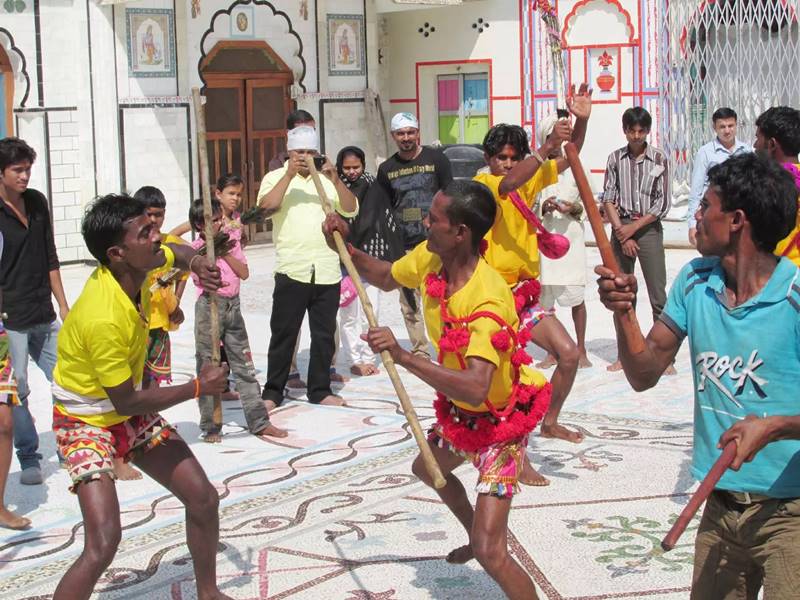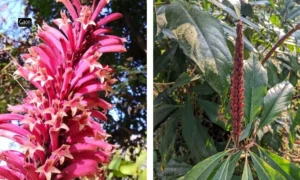Panna, Madhya Pradesh
Festivals are often the custodians of many age-old traditions, and in Bundelkhand region of Madhya Pradesh, a joyous ritual unfolds the day following Diwali. It is one of dance and music called Diwari Nritya that is believed to be a part of the local tradition for nearly 300 years.
The community of milkmen and cattle herders, who are the devout followers of Lord Krishna, dance with fervour, bedecked in colourful attire and with peacock feathers in their hands. And crowds of people turn out to watch them. Diwari Nritya is performed at the temple of Sri Jugal Kishore in Panna, and in Sri Baldao ji, Sri Ram Janaki, Sri Jagannath Swami and Sri Prannath ji temples, also in Panna.
Also Read: Deepavali and lehyam love
“A large number of milkmen from around this region and also from Uttar Pradesh congregate at the Sri Jugal Kishore temple,” Devi Dikshit, a member of the priest family tending to the temple, told Gaon Connection. “Large numbers of milkmen from Chattarpur, Damoh, Teekmagad, etc, in the state consider it a blessing to be able to dance in the temple here,” Dikshit said.
बुंदेलखंड का दिवारी नृत्य
— GaonConnection (@GaonConnection) November 5, 2021
मंदिरों के शहर पन्ना में बुंदेली नृत्य दिवारी की अनूठी परंपरा है। परीवा के दिन समूचे बुंदेलखंड से ग्वाले जुगल किशोर जी मंदिर में दिवारी नृत्य करने आते हैं।
वीडियो @Arun__Singh_ #दिवाली #Bundelkhand #festival #folkdance pic.twitter.com/B1YvSDwhXf
The dancers begin gathering at the temple from midnight and at the crack of dawn by 5 am, they begin their dance ritual, the priest added. The dancing continues all day, he added.
After the darshan of the deity, the milkmen begin their dance accompanied by the beats of the nagara, dholak and the manjira. Some of the dancers, the mauni (maun in Hindi means silence), also observe complete silence as they will not speak during the day.
The dancers consider Lord Krishna to be a childhood friend and dance with abandon and great energy, as if the Lord himself is dancing along with them.
“There is special joy dancing at the Sri Jugal Kishore temple,” Brijesh Yadav from Pandavan village in Panna district, told Gaon Connection. He and his group of dancers were at Chitrakoot on Diwali and had come to Panna, over 100 kilometres away, to perform in front of the deity. “Our group of Diwari dancers have been coming here for the past nine years,” Yadav added.
Also Read: 35 needles, black sesame dye and a prayer for the tiger god — the Baiga tribe’s godna art
Like Brijesh Yadav, Ramkaran Prajapati also said that the feeling of dancing at the temple is indescribable. “I have danced here every year for the past ten years, and the emotions I experience defy definition,” Prajapati from Singhpur village in Panna, told Gaon Connection.
The mauni dancers who dance with abandon are distinctive as they wear peacock feathers as a headgear and have bells on their waist. As they turn, twist and leap about, totally engrossed in their devotion to Krishna, their vigour is irresistible and many spectators often join in.
You could join the Diwari dancers too if you were in or around Panna during Diwali, and rejoice with them as they dance for Lord Krishna.
Read the story in Hindi.

















